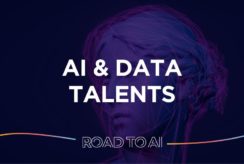Human Capital Management (or Talent Management) solutions are fully matured. The market reflects this, with major projects launched each year, for a worldwide turnover of EUR 11 billion in 2016. Apart from their SaaS technology, these projects have other specific features that have an impact on potential ways of implementing these systems. These special features need to taken into consideration during the implementation phase, if not there is a high risk of the project failing, or taking much longer that predicted.
A specific context
A broad functional scope
When fully implemented, an HMC solution deals with many processes (performance, career, recruitment and mobility, training, salary review) …
… partly subject to high pace throughout the year,
… very strongly interconnected,
… requiring a shared Group database, both of the data collected and the usable values of the repository.
Strong expectations
In addition, there are numerous parties participating in this project, each facing a variety of challenges
– Group Management and the HR Department who need a system that allows for a uniform, qualitative, transparent and professional HR policy;
– The business line, HR function and Manager, a daily player in the HR client relationship;
– Individuals who want to play a role in developing their own career (again), through a positive, active company experience – entry, development, exit.
A corporate project rarely affects the entire organization to this degree.
Sensitive deployment with a strong international component
A recurring global dimension
An HCM project is often triggered by a wish to develop a harmonized HR policy at Group level, which then involves:
– Addressing special limitations (culture, currency, local legislation),
– A high degree of convergence of practices,
– Managing a worldwide project team.
Main issues to be anticipated
The distinct features of this type of project make it special, with a complexity that needs to be measured by the management. It is the responsibility of the project team to then handle the key issues that will ensure they secure implementation:
– Balancing the pace of implementation: how best to reconcile the expected benefits, what absorption rate for changes by the organizations, what capacity for the project team, how to keep up the efforts for the long-term?
– Impacts on the organization to be identified: redefinition of systems / standards that will impact the often long-established local HR processes. And what new roles to prepare (Worldwide / local Admin)?
– Local HR IT architectures heavily impacted: redefinition of systems / standards that may impact on local architectures. To what extent should special local features be taken into account in a Group project?
– Methods of internal re-billing to be defined: what impact is there on the budgets, for the project and the RUN?
A specific change management strategy: what training strategy will bring the players in the process up to speed? How to handle communications in respect of varying targets – culture, language, maturity, profiles?
– A major, multi-cultural project within the company: how to identify and handle specific cultural features, according to profiles: HR, manager, employee? A fascinating project, but one that will generate a great deal of internal expectation, and largely conveys the image of the HR function, both within and outside of the business.
Are you ready?



